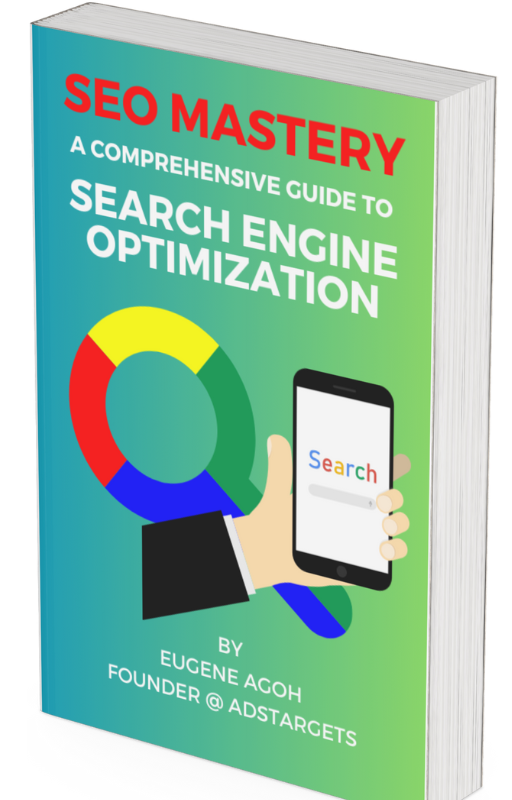Anybody can learn SEO techniques. The nicest thing is that you can usually do it by yourself. There are two primary types of Search Engine Optimization (SEO): on-page and off-page. Optimizing the parts of your website that search engines may directly manipulate and examine is the main goal of on-page SEO. This covers every aspect of optimizing your website pages and blog posts to improve their search rankings.
You have all the resources at your disposal to master Search Engine Optimization from scratch, unlike the pioneers who tried to piece together information and learnt everything the hard way.
For each of you who is interested in learning SEO, I have separated the beneficial information from the bad and organized it into a list of judgment skills that will help you find ways to succeed.
This comprehensive blog post will introduce you to some of the greatest resources available for understanding On-Page SEO. You will quickly discover how to execute powerful on-page SEO tactics that can dramatically raise your website’s search engine rating. This results in several advantages, such as:
1. Increased Organic Traffic: Draw in more customers who are sincere in their interest in your offering.
2. Increased brand exposure: Boost the prominence of your website in search engine results pages (SERPs).
3. Credibility and trust: Knowledgeable, well-optimized material positions you as a thought leader in your field.
4. Better user experience: People stay on websites that are easy to use and load quickly.
You can take charge of your website’s search engine presence and promote organic development with the help of SEO. Let’s examine the fundamental understanding required to get going!
What Foundational Knowledge Should I Have to Learn On-Page SEO?

#1. Search Engines and Ranking
Understanding how search engines operate is the first step towards becoming an expert in on-page SEO. The main procedures involved are broken out as follows:
1. Crawling: To find new and existing online sites, search engines employ software applications known as “crawlers” or “spiders” to continuously monitor the internet. These crawlers look for links inside webpages in an effort to locate as much material as they can.
2. Indexing: When a search engine finds a webpage, it examines it and saves it in a large database known as an “index.” When visitors type search queries, the search engine can swiftly fetch relevant sites.
3. Ranking: The search engine’s algorithm evaluates the indexed web pages in response to a user’s query to ascertain which are most pertinent and educational for the user’s purpose. This ranking mechanism takes into account a number of variables, including off-page features like backlinks and on-page SEO components (which we’ll cover later).
It’s important to comprehend search intent. The fundamental motivation behind a user’s search query is referred to as search intent. Are they attempting to make a transactional purchase, seeking information, or something else entirely? You may customize your on-page SEO approach to provide consumers with the greatest experience possible by knowing the search intent.
#2. Keyword Research

SEO’s fundamental building blocks are keywords. These are the terms and expressions that people enter into search engines to obtain data. Successful keyword research is crucial for on-page SEO. Here’s how the idea is broken down:
-What Do You Mean by Keywords? The terms individuals use to look for information online are known as keywords. They serve as a link between the material you provide for your website and what visitors are searching for.
–What Makes Keyword Research Crucial? You may optimize your content to reach the proper audience by finding relevant keywords with a strong search volume and moderate competition. By doing this, you improve the likelihood that people will find your website while searching for those particular terms.
Tools and Techniques for Keyword Research
You may find several methods and tools to assist you in conducting keyword research. Several well-liked choices consist of:
1. Free Tools for Researching Keywords: Google Keyword Planner (a feature of Google Ads), Answer the public , etc.
2. Tools for Paid Keyword Research: Ahrefs, SEMrush, Moz, and so forth (these tools give deeper insights and more complex functionality).
Think about things like search volume (the frequency with which a keyword is searched for), competition level (the degree of difficulty in ranking for a keyword), and long-tail keywords (more specialized keyword phrases with lower competition) when conducting your study.
Having a solid grasp of search engines, user intent, and keyword power can help you develop a powerful on-page SEO strategy.
Best On-Page SEO Optimization Techniques
Now that you understand the basics of search engine optimization and keyword research, let’s look at some doable strategies for improving the on-page components of your website.
We’ll go over several important strategies in this section that can assist search engines in comprehending your content and raise the possibility that your website will rank higher.
#1. Content Is Paramount
When it comes to SEO, content is king. The foundation of every effective on-page SEO strategy is high-quality, educational, and captivating content. Here’s how to produce content that both people and search engines will adore:
#1. Relevance: The target keywords you choose throughout your study should be closely related to your content.
#2. Educational and Interesting: Give insightful knowledge that speaks to the needs and interests of your audience. Make sure your writing is readable, well-organized, and up to date.
#3. Keyword Integration: Use relevant and naturally occurring keywords in your content, but refrain from keyword stuffing, which is the forced repetition of terms.
Optimizing Content Structure:
Structure is important for SEO and user experience. The following advice can help you optimize your content structure:
#1. Headings and Subheadings: Use H1, H2, and H3 tags to organize your text into manageable chunks and enhance readability. Put pertinent keywords in the headers.
#2. Use Lists and Bullet Points: Use lists and bullet points to organize complicated material into manageable sections.
#3. Length of Paragraph: To improve readability and maintain user engagement, try to write shorter paragraphs.
#2. Title Tags & Meta Descriptions
Title tags and meta descriptions are important on-page SEO components even if they aren’t directly related to your content. They are a major factor in click-through rates (CTR) and are shown on search engine results pages (SERPs).
Creating Captivating Title Tags: Your title tag should appropriately summarize the content of your website and be succinct—ideally, less than sixty characters. Make sure your title grabs readers’ attention and organically includes your goal term.
Meta descriptions, which are 160-character explanations that appear beneath your title tag in search engine results pages, are the second tip. Utilize them to further lure viewers by including a call to action and a succinct summary of your material.
You’ll be well on your way to conveying to search engines the importance and relevancy of the information on your website by putting these best practices for content and title tags and meta descriptions into effect.
Even while content is king, on-page SEO is more than just creating great content. Allow us to investigate some further methods that might dramatically improve the search engine visibility of your website.
#3. Image Optimization
Visuals are an effective way to draw readers in and break up text-heavy information. But the SEO effectiveness of your website can also be impacted by photos. How to optimize the photos on your website:
1. Relevance: Make use of excellent photos that are pertinent to your subject matter and intended viewership.
2. Image Alt Text: Remember to include alt text! For every image, include a detailed alt text that contains your desired keywords. This increases accessibility for individuals who are blind or visually challenged and aids search engines in comprehending the content of your photos.
3. Size of Image Files: Large image files might cause your website to load more slowly. Reduce the size of your picture files to improve loading times—a critical ranking element.
#4. Internal Linking
Making linkages between pertinent pages on your website is known as internal linking. This makes it easier for search engines to comprehend the organization of your website and the connections between its many parts. Here’s how to make use of internal linking to improve your SEO:
1. Strategic Linking: Provide links to pertinent, excellent sites on your website that offer further details or other viewpoints on the subject.
2. Anchor Text: The link’s anchor text should be informative and, preferably, contain pertinent keywords.
Key Technical SEO Considerations:
While we’re focusing on on-page SEO in this guide, it’s important to acknowledge the technological SEO’s role. Technical SEO is the process of optimizing your website behind the scenes so that search engines can simply crawl and index it and make sure it performs properly. The following are important technical SEO considerations:
#1. Mobile friendliness: It’s crucial to make sure your website is responsive and works effectively on all devices in the modern world where mobile users come first.
#2. Page Speed: Both user experience and search engine ranking depend on a fast loaded page. Reduce the size of your images, make use of caching strategies, and maintain clean code to make your website load faster.
You will be well on your way to providing search engines with thorough signals on the relevance and worth of your website if you put these on-page SEO strategies into practice.
Implementing Your On-Page SEO Strategy
Now that you’re equipped with a solid understanding of foundational knowledge and on-page SEO techniques, it’s time to translate that knowledge into action. Here’s how to create and implement a winning on-page SEO strategy:
On-Page SEO Checklist:
To keep you on track, here’s a handy on-page SEO checklist that summarizes the key elements we’ve discussed:
1. Keyword Research: Conduct keyword research to find relevant terms with reasonable competition and a high search volume.
2. Content Creation: Write useful, interesting, and high-quality material that focuses on the keywords you have selected.
3. Content Structure: Make your information easier to read by using bullet points, subheadings, and distinct headings and paragraphs.
4. Title Tags & Meta Descriptions: Include your goal keywords in both your captivating title tags (60 characters or less) and meta descriptions (160 characters or less).
5. Image Optimization: Make use of pertinent, excellent photographs together with informative alt text that includes your desired keywords. Reduce the size of your picture files to improve loading times.
6. Internal Linking: Use descriptive anchor text to connect to pertinent pages on your website in an organized manner.
Ongoing Optimization:
SEO is a continuous effort rather than a one-time remedy. Here’s how to guarantee ongoing development:
#1. Track Website Performance: Use tools such as Google Search Console to keep tabs on the search engine ranking of your website.
#2. Examine Outcomes: To pinpoint areas that want improvement, examine user behavior and website traffic statistics.
#3. Adapt and Refine: Continue to optimize the technical elements of your website, update content, and fine-tune your keyword approach in light of your results.
Recall that SEO is always changing, so keeping abreast of the most recent developments and recommended techniques is essential to preserving a good online presence.
Conclusion
Best wishes! You now have the fundamental understanding and useful tactics needed to begin optimizing your website and raising its search engine ranking.
Put your newly acquired information to use and act! Put this guide’s on-page SEO tactics into practice, and you’ll see your website move up the search results pages. Recall that SEO is a process rather than a final goal. Continue to learn, be inquisitive, and modify your strategy as necessary.
Although the focus of this article was on on-page SEO, off-page SEO elements are also taken into account in a comprehensive SEO plan. Building backlinks, or links from other websites to yours, is the main goal of off-page SEO. These links may greatly increase the authority and ranking potential of your website.
Check out our full course, SEO Mastery: A Comprehensive Guide to Search Engine Optimization, and discover some useful tools to investigate advanced strategies and go deeper into the area of on-page SEO.

We hope that this thorough tutorial has given you the confidence to take charge of the SEO future of your website. By being committed and always learning, you may successfully use on-page SEO to help you reach your online marketing objectives.






